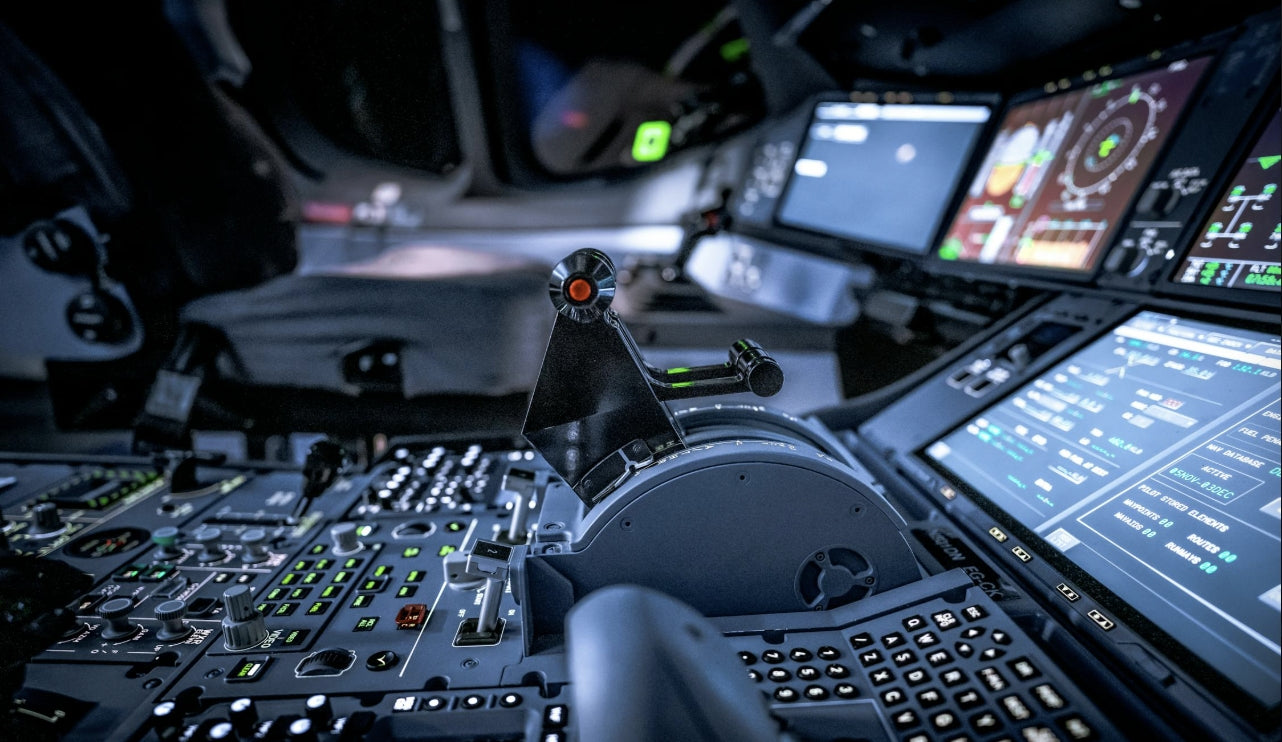
Kore Aviation - What does autopilot do? If you have flown on a commercial flight or taken flying lessons, you have probably heard the term. Some imagine planes flying themselves while pilots sit back and relax. Others believe autopilot can replace human pilots altogether.
In this article, we’ll break down what autopilot really is, how it works in various phases of flight, and what it does not do.
What Is Autopilot?
Autopilot is a flight control system used in aircraft to perform certain tasks that would otherwise require manual input from the pilot. It is not a robot that flies the plane by itself. Instead, it assists the pilot by handling routine tasks like maintaining heading, altitude, or speed.
Types of Autopilot Systems:
- Single-axis autopilot: Controls either pitch or roll.
- Two-axis autopilot: Controls both pitch and roll.
- Three-axis autopilot: Controls pitch, roll, and yaw.
Advanced systems can manage entire flight phases with minimal manual correction.
What Does Autopilot Do?
Autopilot does a variety of tasks based on how it is programmed. Here are the main functions:
1. Maintains Altitude
When a pilot activates altitude hold, autopilot keeps the aircraft at a specific altitude, adjusting pitch as needed.
2. Follows Heading or Navigation Course
Autopilot can track a GPS course or heading selected by the pilot, keeping the plane aligned with the flight path.
3. Controls Airspeed
Some systems adjust throttle settings to maintain a desired airspeed, especially in jets or more advanced aircraft.
4. Executes Climb or Descent
Pilots can set a vertical speed or altitude target, and autopilot will adjust the aircraft to meet it.
5. Assists With Approach
In commercial aircraft, autopilot can fly an ILS approach and even land the plane under certain conditions.
What Autopilot Does Not Do
Autopilot is powerful but not perfect. There are several things it cannot handle:
- Unexpected turbulence
- Avoiding traffic visually
- Reacting to emergencies like engine failure
- Taxiing or ground maneuvering
- Decision-making in dynamic situations
Pilots are still in full command and must be ready to take over instantly.
Read More: 10 Reasons to Become a Pilot
Common Autopilot Modes Explained
| Mode | What It Does |
|---|---|
| Heading (HDG) | Keeps aircraft flying in a selected direction |
| Altitude Hold (ALT) | Maintains chosen altitude |
| Vertical Speed (VS) | Climbs or descends at selected rate |
| Approach Mode (APR) | Tracks ILS or RNAV approach path |
| NAV Mode | Follows GPS or VOR course |
Autopilot and Student Pilots
If you are training to become a pilot, you may wonder whether you need to learn about autopilot now. The answer is yes.
Here’s why:
- Early exposure builds confidence with cockpit automation
- IFR training requires understanding autopilot features
- Better workload management helps you focus on radio, navigation, and situational awareness
When using autopilot, clear communication becomes even more important. Learn How to Choose and Test an Aviation Headset Before Your First Flight
5 Misconceptions About Autopilot
-
“Pilots don’t fly the plane anymore”
Not true. Pilots are active at every phase. Autopilot handles routine adjustments. -
“Autopilot works like cruise control”
It’s more advanced but still needs manual input and supervision. -
“Planes can land without pilots”
Only under specific conditions and rarely without oversight. -
“All planes have autopilot”
Many small training planes like the Cessna 152 don’t include it. -
“Autopilot prevents all accidents”
It reduces workload, but human error can still occur if it’s misused.
Learn More: 10 Common Student Pilot Mistakes and How to Avoid Them
FAQs: What Does Autopilot Do?
-
Does autopilot fly the entire flight?
It can manage most of the flight but pilots take off, land, and monitor the entire process. -
Do all student pilots learn to use autopilot?
Not always. Basic flight training is manual first. Autopilot use comes later, often during instrument rating. -
How is autopilot controlled?
Via a control panel where pilots set modes, altitudes, headings, and speeds. It can be disengaged instantly if needed. -
Can autopilot handle emergencies?
No. Pilots must take over when unexpected issues happen. -
Is autopilot allowed in VFR flights?
Yes. Pilots can use it in VFR, but they must still maintain visual separation. -
Does autopilot replace a co-pilot?
No. It assists both pilots. Two human pilots remain standard for safety. -
Can I use autopilot in a Cessna?
Many Cessna models like the 172S or newer G1000-equipped versions have autopilot. Older ones may not.
Final Thoughts
So, what is autopilot? It’s a system designed to support, not replace pilots. From maintaining altitude to flying approaches, autopilot reduces workload and improves safety. But human pilots remain the most important decision-makers in the sky.
📞 Train smarter and communicate clearer with Kore Aviation. Our beginner-friendly aviation headsets help you stay alert and connected whether you’re hand-flying or monitoring your autopilot system.
